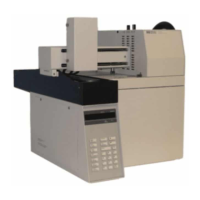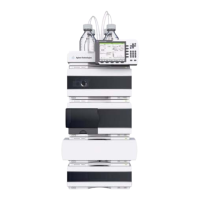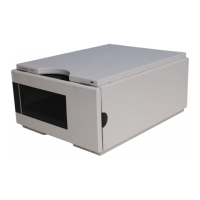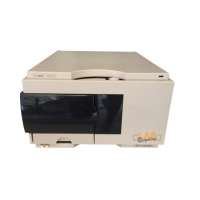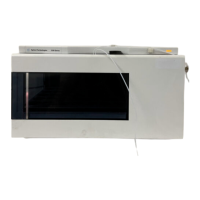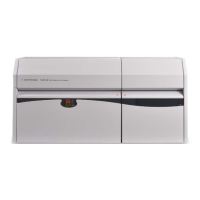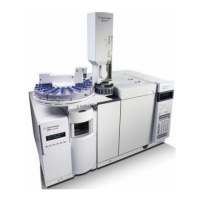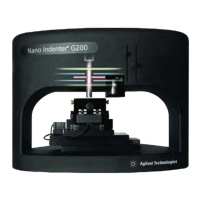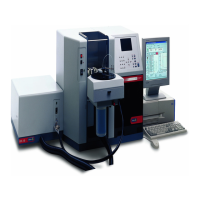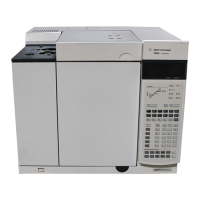116 User Information
Developing Methods
Vial Pressurization and Time
When the sampler starts, it moves the first vial into the oven.
Equilibration time begins. To shorten the required equilibration
time, agitate the vial in the oven. See “Vial Parameters” on
page 57.
Vial pressurization
With many liquid (for example, aqueous) samples, the pressure
developed in the vial may be sufficient to ensure filling the valve
loop without additional pressure. Some samples (for example,
dry plastics) may not create enough head pressure, and do
require more, in the method.
In general, 1.5–2 atmospheres pressure in the vial will be
appropriate for filling the valve loop. It may be possible to make
or buy a pressure gauge fitted with a needle that could be used
to determine the actual vial pressure developed under your
time and temperature conditions. Set the method vial
pressurization at a slightly higher value (for example,
10–15 psi), if your measured pressure is not enough to ensure
adequate loop filling.
To optimize your selection of vial pressurization, run a series of
vials using different pressures, and interpret the optimum
conditions from peak areas versus vial pressurization.
Vial pressurization time
Typical vial pressurizations times range from 10 to 30 seconds.
CAUTION
If the pressure setting is too low the vial pressurization flow path may
become contaminated.
NOTE
Optimization is valid only for analysis of a specific sample at a specific
oven temperature.
medium_standard.book Page 116 Tuesday, February 17, 2004 10:14 AM
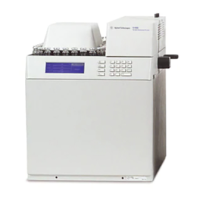
